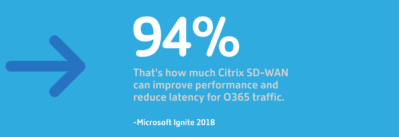
Make Every Experience a Great One
By CMD Technology Group
2 min read
Office 95, 97, 2000, XP…365. For nearly three decades, Microsoft has provided us one of the most ubiquitous office software suites, with updates every few years that continues to streamline and enhance our daily workflows. Over the years the delivery methods would evolve from large stacks of floppy disks (45 for Office 97) to CD-ROM and eventually digital downloads. Each update, however, represented tedium for IT, especially in the early days when each endpoint had to be updated manually.
However, during those decades, software was not the only element of office life to evolve. Along with the methods and how we work the location of where we work also began to shift. Chances are, your business or organization no longer has the large home office it once had, and if it does many of the workstations stand empty as more branch, and remote offices grew.
To lower infrastructure costs and increase flexibility around these distant locations, organizations are rapidly adopting Microsoft Office 365. Since Office 2013, Microsoft has promoted Office 365 as the primary way to obtain its software, and for the most part, users love the portability and easy accessibility of these apps because they can open their secure digital workspace and do their work from anywhere.
Performance
The bad news is, these same users often don’t get the performance they’re used to in a traditional office. The reason? Many branch locations are still supported by legacy WANs and outdated MPLS connections. These common solutions rely on the “perimeter style” approach to networking, where vital app and data traffic is funneled back through centralized datacenters and subject to latency from inefficient network paths, inspections, and other factors. For example, as more and more companies move data and resources to the cloud, network traffic increases exponentially straining traditional WAN networks and lead to traffic bottlenecks and poor overall user experience.
To address such issues, Citrix and Microsoft have worked together to create a more modern solution. Like other software-defined WANs, Citrix SD-WAN uses inexpensive Internet connections to route SaaS traffic directly from remote or branch locations to their intended destinations—bypassing the traditional network perimeter and its centralized datacenters. But that’s where the similarity ends. Citrix provides support for the Microsoft Office 365 Connectivity Principles to help ensure optimal user experiences. What does this mean? Basically, it enables Citrix SD-WAN users to tap into Microsoft’s worldwide network of 130+ edge nodes and get Autobahn-style traffic routing for your Office 365 traffic!
How it works is simple. Citrix SD-WAN identifies and prioritizes Office 365 traffic and redirects it automatically to the nearest Office 365 “front door” (versus a regional Microsoft data center). Since the 130+ entry points don’t need to be where back-end Office 365 servers are, they can be as close to your individual office locations as possible to provide the optimal network performance.

For your users, this translates into dramatically faster performance for Office 365 apps. In fact, at a recent Microsoft Ignite conference, Citrix SD-WAN customers were reporting performance improvements like:
- 2x-5x faster upload speeds
- 3x-10x faster download speeds
- 55% faster opening of Word docs in Office Online
- 40% faster opening of PowerPoint documents in Office Online
That’s an experience that everyone wants. And you can give it to them…if you have a modern network. To learn more about how you can deliver the ultimate Office 365 experience for your branch-office and other remote users, schedule a free consultation with one of our consultants.
afernandez@cmdtg.com | 407-442-0265

If you have a question about any of our solutions or any feedback you’d like to share, contact us. We would love to hear from you!
